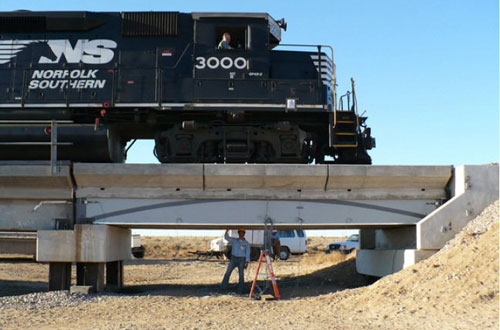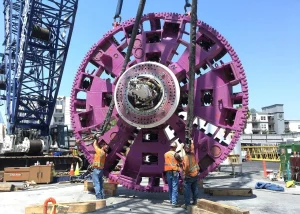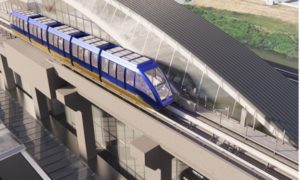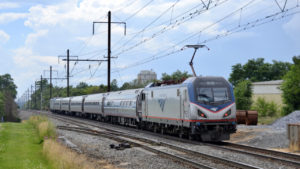TTCI wins ASCE award for HCB span research, collaborates with CSU-Pueblo on new degree program
Written by Jenifer Nunez, assistant editor
Led by Principal Engineer Duane Otter, Transportation Technology Center, Inc.'s (TTCI) work with John Hillman, inventor of the Hybrid‐Composite Beam and recipient of the 2013 Charles Pankow Award for Innovation, was recognized by the American Society of Civil Engineers (ASCE).
Otter received a plaque honoring TTCI “As a collaborator on the winning project” and will represent TTCI at a gala this spring in Washington, D.C., honoring Hillman and other civil engineering leaders.
“Introducing a new technology in the transportation industry is a daunting task,” said Hillman. “I am very grateful for the support we have received from everyone at TTCI. In particular, Duane Otter, who did an exemplary job serving as an advocate for new technology and encouraging the support from the Association of American Railroads’ Bridge Technical Advisory Group to have the first HCB bridge deployed to the Transportation Technology Center for installation and testing.”
TTCI tested the prototype HCB span for 1.5‐million load cycles under heavy freight railroad traffic and recently completed follow‐up testing of a commercially produced HCB span. Future plans call for monitoring of this span in revenue service on a nearby railroad line.
Hillman describes the HCB as a new type of structural member developed for use in highway and railroad bridges, as well as marine facilities and other structures. The HCB is comprised of three main subcomponents: shell, compression reinforcement and tension reinforcement. In its most simplistic embodiment, the shell is comprised of a fiber reinforced polymer box beam.The compression reinforcement consists of concrete, pumped into a profiled conduit (generally an arch) within the beam shell. The tension reinforcement consists of carbon, glass or steel fibers anchored at the ends of the compression reinforcement. The HCB combines the strength and stiffness of conventional concrete and steel with the lightweight and corrosion advantages of advanced composite materials.
In other TTCI news, a new Master of Science (MSE) degree in engineering with emphasis areas in mechatronics and railroad engineering will be offered by Colorado State University (CSU)-Pueblo beginning next fall, due in part to a collaboration with TTCI.
TTCI professionals and CSU-Pueblo engineering faculty began meeting in the spring of 2011 to discuss a vision for a railroad engineering master’s degree program. After months of designing specific content for each course, adjusting prerequisite courses to support the new courses and building a shared understanding of the purpose, the program was approved by the CSU System Board of Governors in December 2011 and by the Colorado Commission on Higher Education in January 2012. The first two railroad engineering courses, Vehicle Dynamics and Railroad Structures, will be offered in fall 2013, followed by Fleet Management and Railroad Power Systems in spring 2014.
When fully implemented, the MSE degree may be completed in one calendar year.





